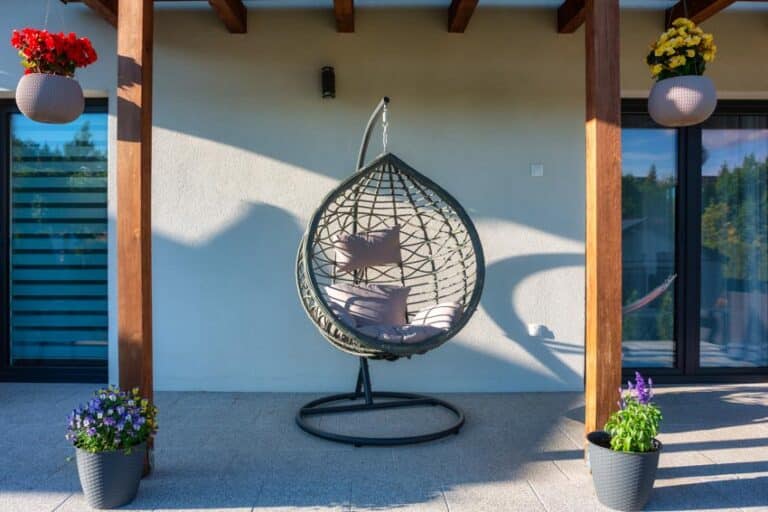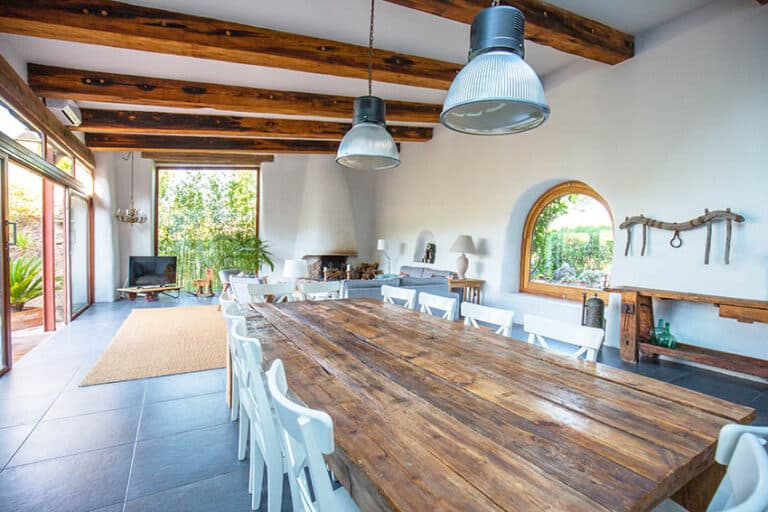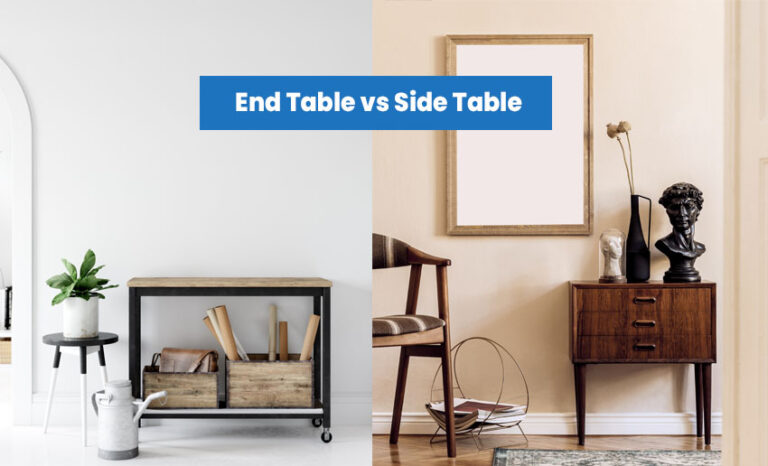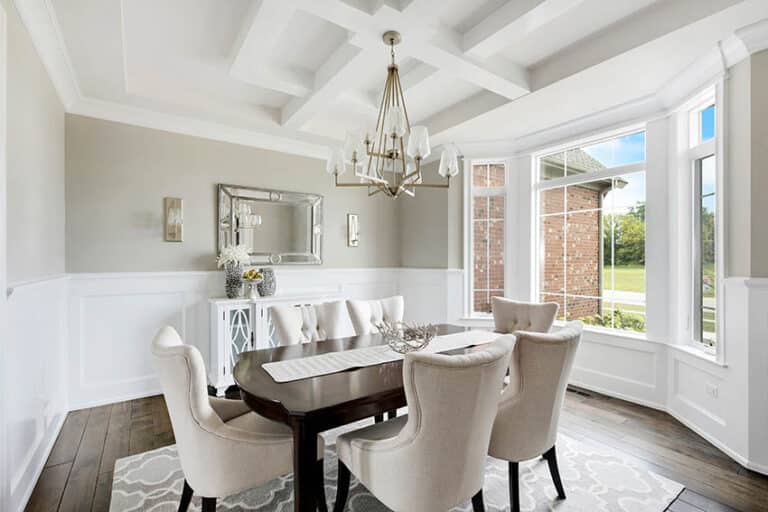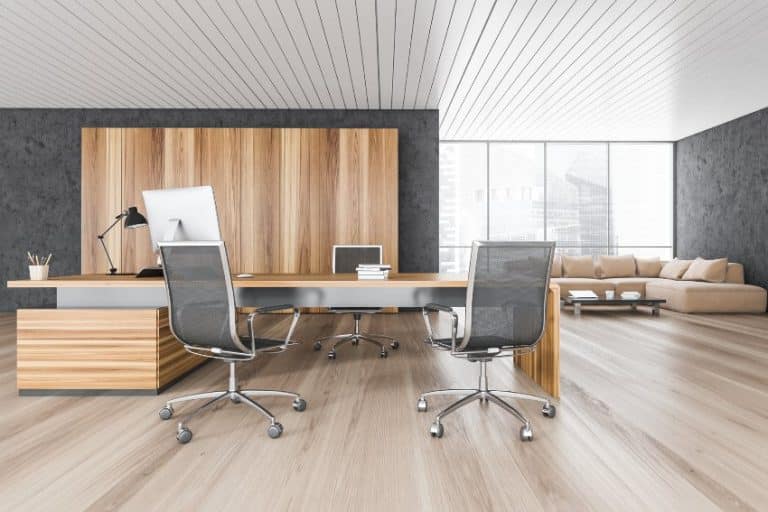Leather Couch Pros and Cons
Most furniture in a home holds two purposes; to look beautiful and feel comfortable. A leather couch is one piece that offers pros and cons, comfort, and style and is a timeless piece for your home. Leather is one of the most popular coverings for furniture and offers countless grains, textures, colors, and finishes.
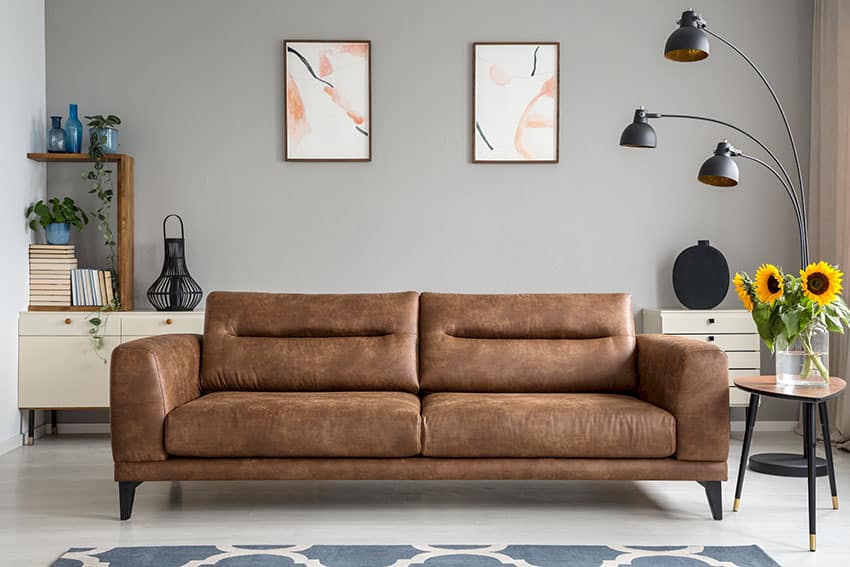
Genuine leather is natural and gets its style from the individual characteristics of the hides used in tanning. Couches made with genuine leather will bear the natural markings showing its historical origin. The hide may show growth marks, scratches, hair pore patterns, and scars. These natural markings don’t detract from the overall look.
Instead, they provide the distinct qualities that give a couch its unique and stylish look. A quality couch with a sturdy frame and soft cushioning can be very comfortable and add a chic, modish look to your home.
Read this informative guide to learn about the pros and cons of these couches, if they’re a good fit for your home décor, how long they last, grades, durability, and comfort.
Advantages Of A Leather Sofa
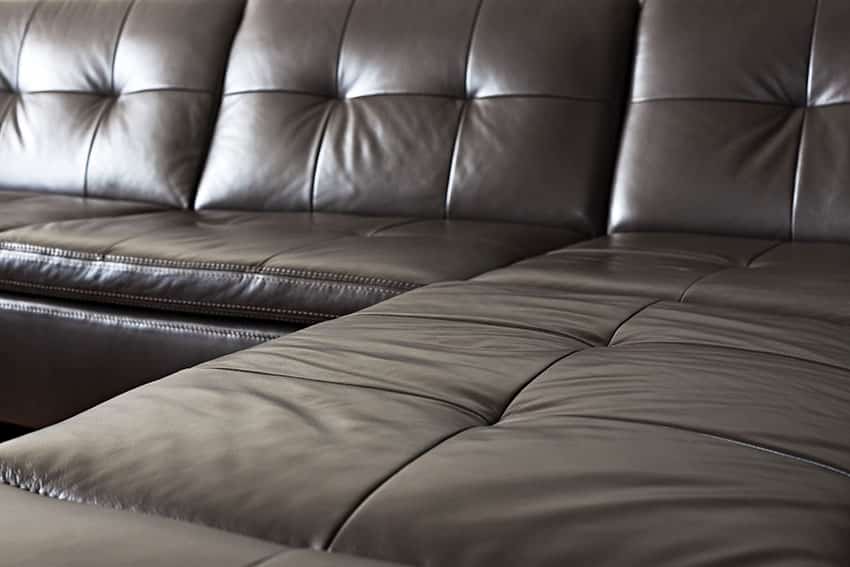
Many homeowners and professionals still highly desired leather, even with the vast array of fabrics and synthetic materials available for furniture.
Modern tanning processes are advanced from the original methods, creating a natural fabric that is resistant to cracking, peeling, and sagging. It remains the top choice for furniture material.
Does Not Fade: When fabric-covered furniture ages, it often fades and loses shape. This creates a worn look. However, with its unique qualities, it gets softer with age and becomes suppler.
When the leather is dyed, the color is absorbed into the hide and will not fade. Even scratches and wear don’t show. Aged couches look even more luxurious.
It Breathes: Unlike many synthetic, faux leather materials, the real thing breathes. It distributes warmth or cold quickly and easily, making sitting or lying down very enjoyable. It also absorbs moisture and then releases it to keep you from feeling sticky or chilly.
Timeless: Furniture covered with this material is commonly sold in neutral colors native to the hide. Neutral colors will typically match changes you make in your décor, such as going from lightly colored walls to darker, richer colors. Read more about living room color schemes with brown leather furniture here.
The furniture usually will not have to be replaced. Pillow accents and lap blankets can be used to tie in new colors.
Healthy: The fabric does not hold dust and allergens and does not have fibers where tiny mites or bugs can hide. It doesn’t hold odors or absorb most spills, making it easy to keep clean. It is hypoallergenic and repels pet dander and hair.
Easy to Clean: This furniture makes cleaning up spills easy. There’s no need for a bulky upholstery cleaner. Spills can be cleaned by using a damp rag to sop up the liquid. Messier and stickier stains can be cleaned by adding mild soap to the rag and then wiping with a dry rag when clean.
Disadvantages Of A Leather Sofa
More Expensive: The material is costly, but many customers feel it’s worth the price. Lower-quality genuine leather may easily scratch or scuff, but higher-quality upholstery grades are more durable and damage-resistant.
Scratches are Easier to See: Light scratches may blend in with the natural patina of aged fabric, but larger, deeper scratches can be easier to see. These more visible scratches can be hidden with color-matched polish or conditioner.
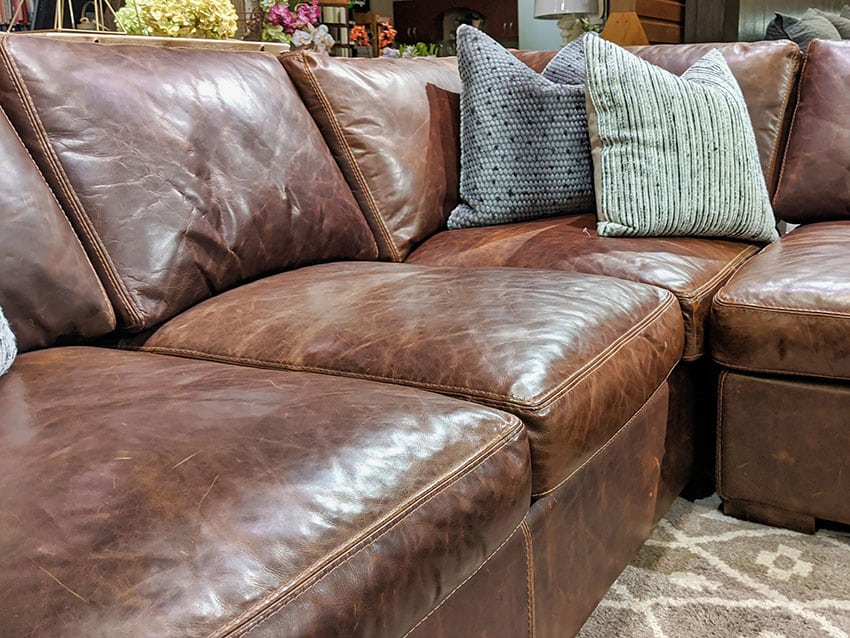
Can Be Cold, Hot, or Sticky: Although it breathes and can absorb moisture, the first contact with your bare skin can be shocking if the couch is in a cold room or near a fireplace, giving off high heat.
Once you’ve been sitting on this furniture, bare skin will become comfortable. However, sitting for a long time can absorb body heat and cause you to feel hot.
Some Retailers May Try to Sell Fakes: As unethical as it may be, some retailers may try to sell fake leather furniture. The most obvious way to know you’re buying the real material is to check the label.
Look for words stating the furniture is made from genuine leather, not synthetic or polyester. Touch the surface to see if it’s soft and flexible.
Fake fabrics will feel more like plastic or vinyl and be cold, but real will be slightly grainy and warm to the touch. Smell the material for the distinct oaky smell and look for pores on the surface.
Be aware that just because it says it’s genuine on the label does not mean it is crafted from high-quality materials. In fact, this designation by itself is the lowest quality. Look for full-grain products if you’re looking for the best.
Are Leather Sofas Durable?
A high-quality leather couch built well is very durable. The material is thick and not subject to fraying like synthetic or natural fabrics. Although children and pets can be hard on these couches with scrapes and scuffs, it is easy to keep clean and flexible. This couch is a great option if you want a durable couch for your home or office that will last for years.
One consideration is the damage a pet can do. If a dog chews the couch’s arms or cushions or a cat uses the side of the couch for a scratching platform, the couch must be recovered.
Recovering these couches is much more expensive than a fabric couch. It’s a two-sided coin when it comes to pets and these couches. These couches keep pet hair and dander at bay, but the damage a pet can do may be costly.
Sharp objects may cause a rip or tear in the fabric that can be repaired with a repair kit. These kits include everything you need to patch the tear and provide color additives to help match the color of the couch. In addition, it is a heavy material that may make it heavier to move around than a classic fabric sofa.
Leather Grades for Couches
Here’s a chart showing the top leather grades, quality, and durability.
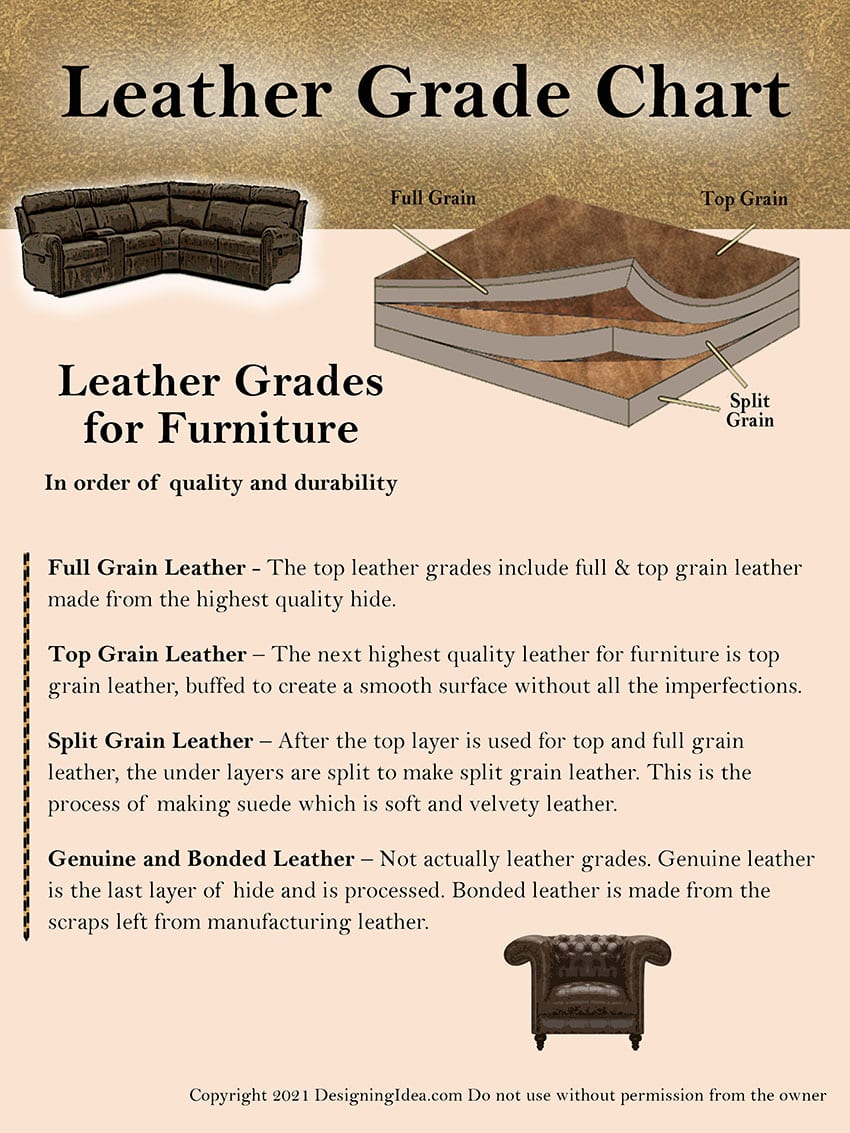
How Long Should Leather Couches Last?
Leather couches last up to four times longer than couches covered with synthetic fabrics or faux materials. They are durable and will resist tears, scratches, and holes, and seams remain intact due to the strength and quality of the material.
High-end, thick, leather-upholstered couches can last for approximately 15 to 20 years, while the lifespan of a fabric couch is closer to 5 years. For more comparisons, read about the differences between leather and fabric sofas on this page.
How long these couches will last also depends on the quality. A higher-quality, top-grain leather can last more than 25 years. Cheaper couches, or those made with low-budget materials like pleather or faux material, may last only a few years.
To help your couch last its longest, perform regular maintenance, including:
• Dust with a damp cloth at least once a week. Use a microfiber cloth dampened with a bit of distilled water for the best results.
• Once or twice a year, do a deep cleaning with a cleaner like Otterwax.
• Use a conditioner product after cleaning your couch. Do this more often if your home or office air is dry.
Are Leather Material Couches Comfortable?
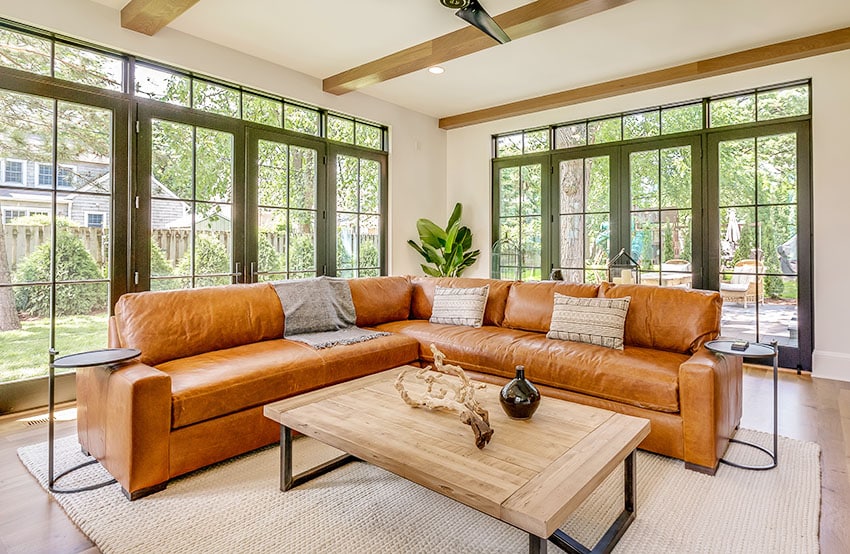
While some people don’t like the feel of leather, it offers a soft feel, especially after it’s broken in. These couches will soften over time, and how long this takes depends on the type. Softer suede takes less time than full-grain surfaces to soften, which may take anywhere from 6 to 12 weeks.
You can use a small amount of saddle soap rubbed into the surface weekly to speed up the time it takes to break in these couches. Sofas that are broken in are soft and even buttery to the touch.
The overall stability, structure, and foam volume affect a couch’s coziness; properly made cushions, backing, and armrests can be very comfortable.
Does Leather Furniture Get Hot?
Leather is breathable and absorbs moisture, but a sofa can become hot for bare skin during the warm months of summer. The surface material will absorb body heat and the warmth in a room, making you feel hot and sweaty.
To avoid the discomfort of heated leather, keep the sofa out of the direct sun, use a lap blanket for sitting on, or wear clothing that does not leave your skin exposed to the touch.
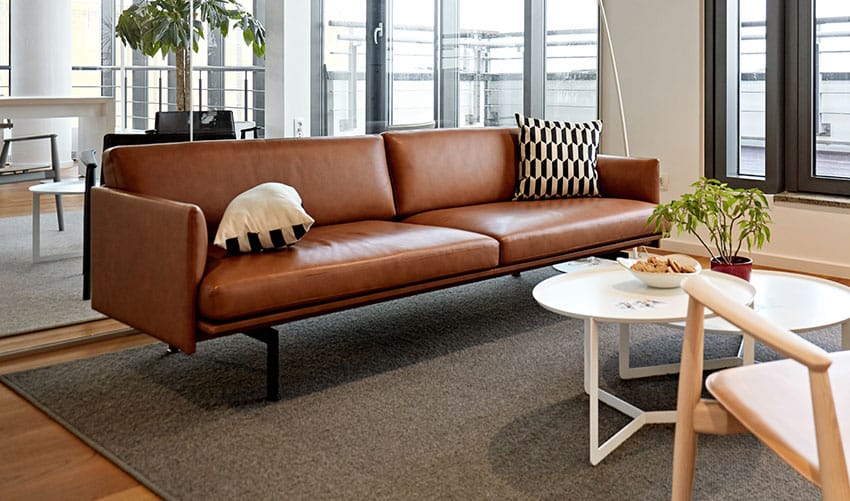
Is A Leather Sofa Worth It?
Leather couches present a higher retail cost; however, they will last longer and hold up to frequent use. Couches covered with fabrics or faux materials will not last as long, making the higher cost of the couch worthwhile.
A high-quality couch is a good investment and provides a much better lifetime value than a fabric or faux couch. A couch is typically the first piece of furniture bought when you move into a house. Friends and family will spend a lot of time on and around it.
Many professional offices or businesses also have a couch in their lobby or waiting room that sees a lot of use. A leather couch is always a smart choice for the best durability and looks.
See more related content in our article about the types of leather for furniture on this page.

